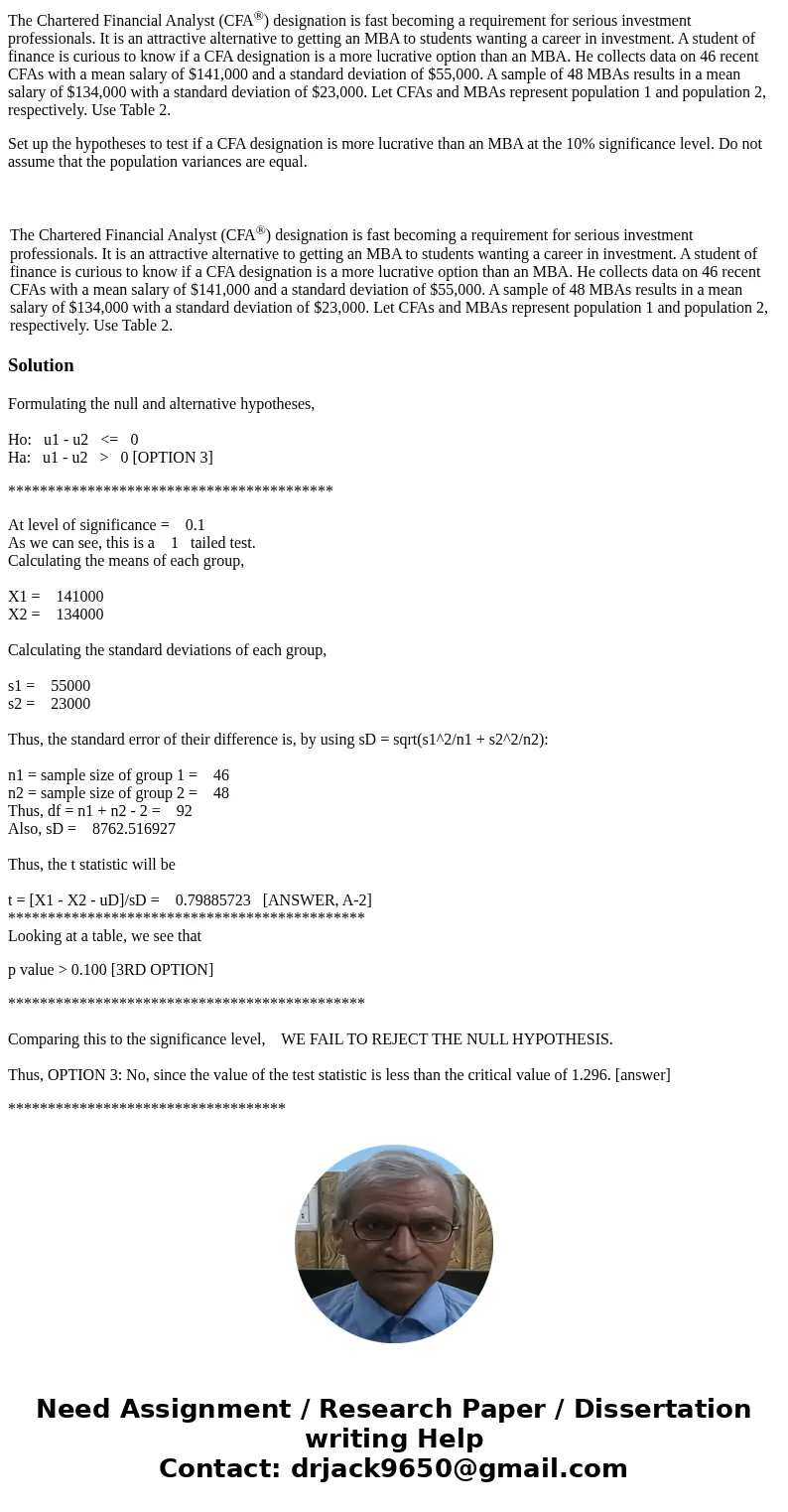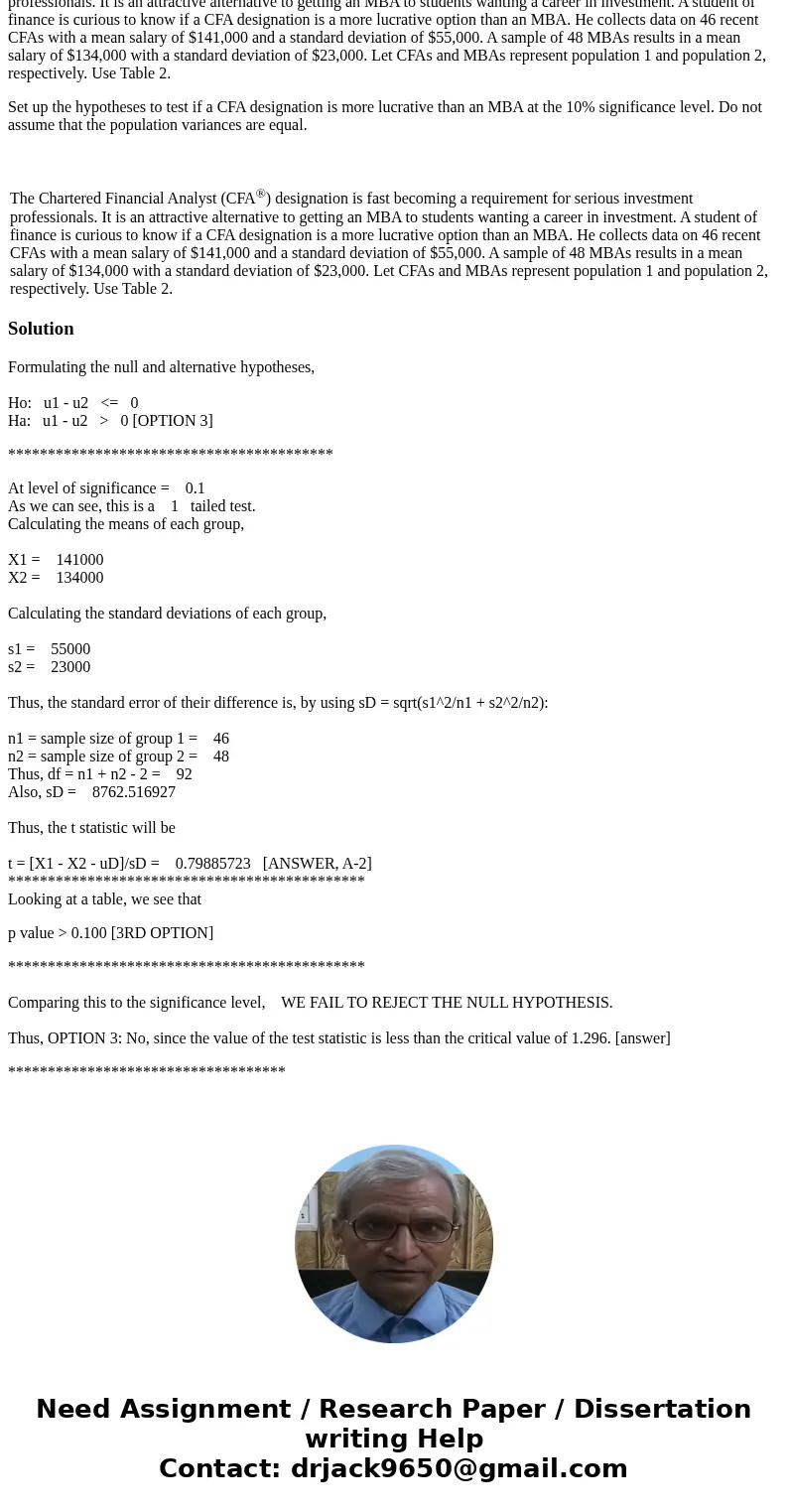The Chartered Financial Analyst CFA designation is fast beco
The Chartered Financial Analyst (CFA®) designation is fast becoming a requirement for serious investment professionals. It is an attractive alternative to getting an MBA to students wanting a career in investment. A student of finance is curious to know if a CFA designation is a more lucrative option than an MBA. He collects data on 46 recent CFAs with a mean salary of $141,000 and a standard deviation of $55,000. A sample of 48 MBAs results in a mean salary of $134,000 with a standard deviation of $23,000. Let CFAs and MBAs represent population 1 and population 2, respectively. Use Table 2.
Set up the hypotheses to test if a CFA designation is more lucrative than an MBA at the 10% significance level. Do not assume that the population variances are equal.
| The Chartered Financial Analyst (CFA®) designation is fast becoming a requirement for serious investment professionals. It is an attractive alternative to getting an MBA to students wanting a career in investment. A student of finance is curious to know if a CFA designation is a more lucrative option than an MBA. He collects data on 46 recent CFAs with a mean salary of $141,000 and a standard deviation of $55,000. A sample of 48 MBAs results in a mean salary of $134,000 with a standard deviation of $23,000. Let CFAs and MBAs represent population 1 and population 2, respectively. Use Table 2. |
Solution
Formulating the null and alternative hypotheses,
Ho: u1 - u2 <= 0
Ha: u1 - u2 > 0 [OPTION 3]
*****************************************
At level of significance = 0.1
As we can see, this is a 1 tailed test.
Calculating the means of each group,
X1 = 141000
X2 = 134000
Calculating the standard deviations of each group,
s1 = 55000
s2 = 23000
Thus, the standard error of their difference is, by using sD = sqrt(s1^2/n1 + s2^2/n2):
n1 = sample size of group 1 = 46
n2 = sample size of group 2 = 48
Thus, df = n1 + n2 - 2 = 92
Also, sD = 8762.516927
Thus, the t statistic will be
t = [X1 - X2 - uD]/sD = 0.79885723 [ANSWER, A-2]
*********************************************
Looking at a table, we see that
p value > 0.100 [3RD OPTION]
*********************************************
Comparing this to the significance level, WE FAIL TO REJECT THE NULL HYPOTHESIS.
Thus, OPTION 3: No, since the value of the test statistic is less than the critical value of 1.296. [answer]
***********************************


 Homework Sourse
Homework Sourse